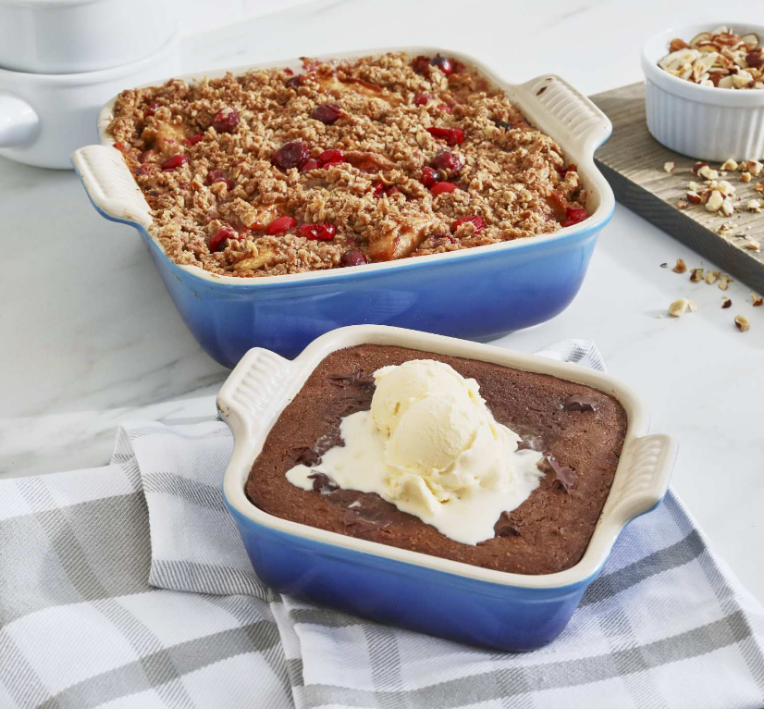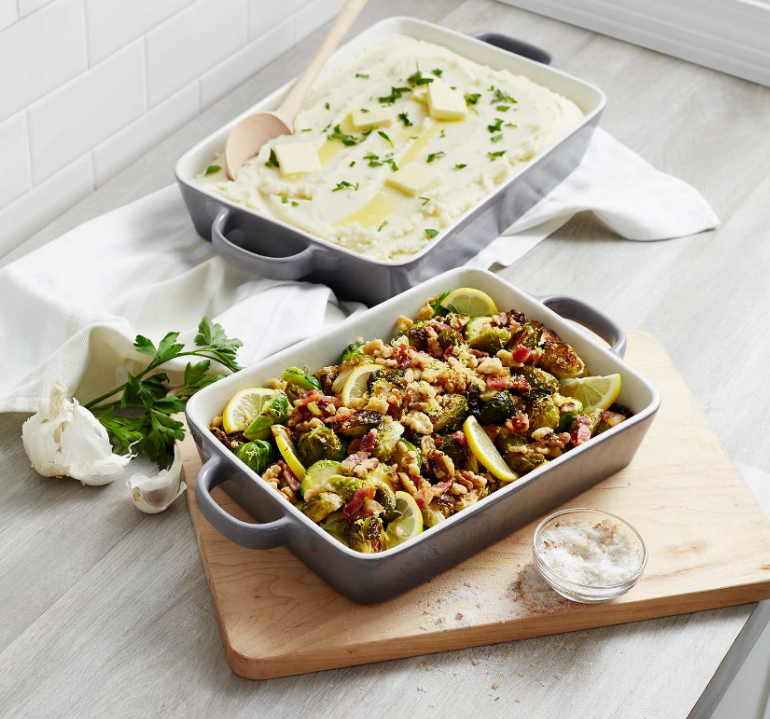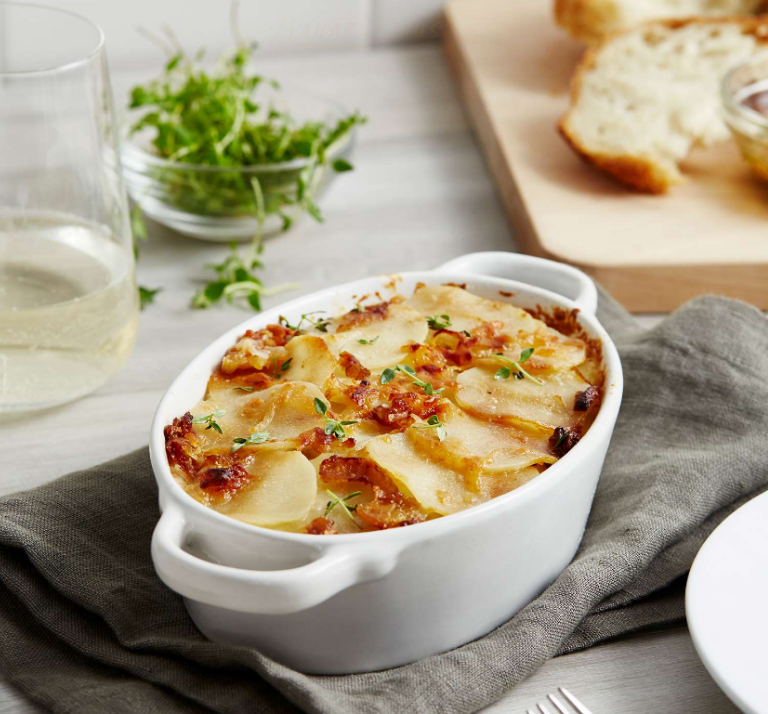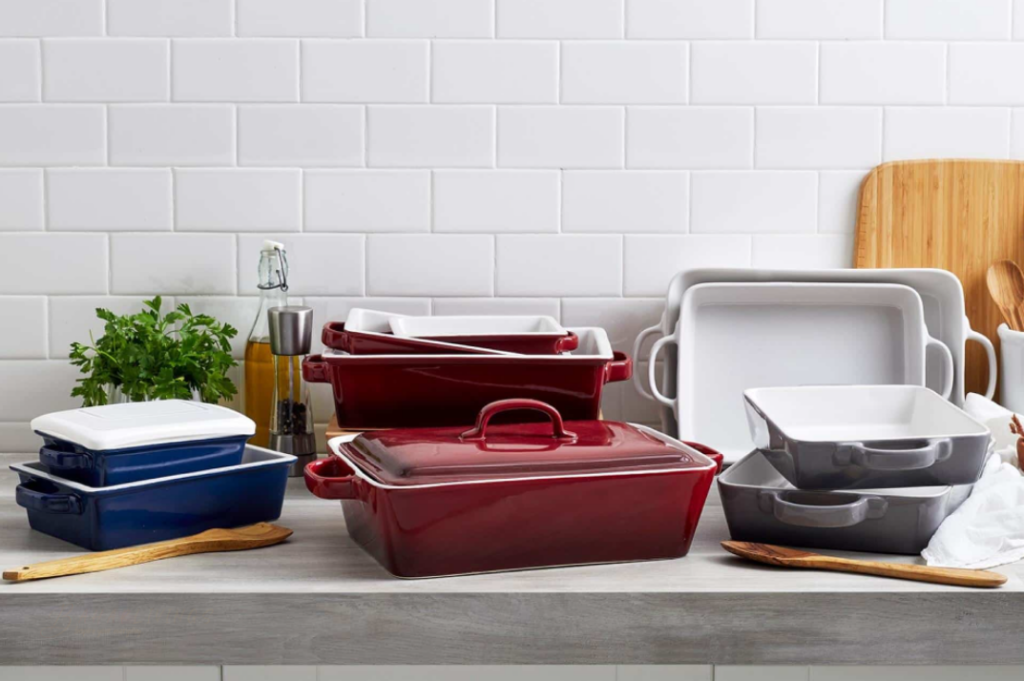Embark on a culinary journey to master the art of casserole dish sizes guide. Explore the nuances of casserole dish sizes, materials, and cooking tips to enhance your culinary expertise from the get-go.
Versatile dishes are crucial for various recipes, like lasagna layers, shepherd’s pie toppings, and baked macaroni and cheese. Casserole dishes encourage experimentation, making them perfect for both elaborate Sunday dinners and quick weeknight meals.
Many cooks find it challenging to choose the correct casserole dish size despite enjoying hearty casseroles.
When recipes specify a dish by size, it can feel like a cooking puzzle. How do you translate quarts into practical dimensions, especially with the variety of dishes available?
Let’s explore casserole dishes, simplifying the basics of size and capacity to help you navigate your kitchen confidently and effortlessly.
Discover the Perfect Casserole Dish for Your Kitchen

Ideal Square Casserole Dish Sizes Guide
Square baking dishes, favored for their compact size, are ideal for smaller families and side dishes.
- The 1.5-quart square casserole dish measures approximately 8 inches in length, 8 inches in width, and 1.5 inches in height, making it ideal for small casserole, brownies, or cornbread.
- The 2-quart square casseroles dish is a bit bigger, typically measuring about 9 inches in length, 9 inches in width, and 2 inches in height. This size is perfect for medium-sized recipes.

Ideal Rectangle Size Casserole Dish
Rectangle baking dishes are a popular choice for baking dense, rich dishes, often preferred for their smaller sizes, making them perfect for side dishes or meals for smaller families.
- The 2-quart rectangular casserole dish is about 11 inches in length, 7 inches in width, and 1.5 inches in height. It’s great for smaller families or recipes that don’t require much raising.
- The 3-quart rectangular casserole dish, typically measures around 13 inches in length, 9 inches in width, and 2 inches in height. This size is the most popular, ideal for standard recipes serving 4–6 people.
- As for the 4-quart rectangular casserole dish, it’s larger, approximately 15 inches in length, 10 inches in width, and 2 inches in height. This site is suitable for larger families or gatherings.

Important Sizing Tips for Your Casserole
Oval casserole dishes offer a chic twist to the classic rectangular shape, featuring curved edges that are perfect for roasts and poultry.
- For a 5-quart oval casserole dish, it typically measures about 11 inches in length, 8 inches in width, and 4 inches in height. This size is ideal for roasting vegetables or smaller poultry dishes.
- Alternatively, the larger 5-quart oval casserole dish is around 13 inches in length, 9 inches in width, and 4 inches in height. It’s versatile enough for various dishes, including larger roasts.

Important Sizing Tips for Your Casserole Dish
When choosing a baking dish size, think about the kinds of dishes you make most often. The depth of the dish matters, especially for recipes that rise a lot while cooking.
Check brand-specific dimensions and volumes to ensure the casserole dish meets your requirements accurately. In practical terms, having different sizes available can be helpful. For instance, a 2-quart dish works well for side dishes, while a 3-quart dish is versatile enough for most main courses.
For bigger gatherings, a 4-quart dish is handy to have.
Here’s what to consider when picking the right size casserole dish sizes guide:
- Understanding Capacity vs. Size: Differentiate between capacity (quarts or liters) and size (inches or centimeters) to understand casserole dish measurements effectively
- Consider Shape: The shape of your casserole dish impacts your dishes’ outcome. Deeper dishes are better for recipes with liquids to prevent drying out, while shallower, wider dishes are ideal for achieving a crispy topping.
Choose between square, rectangular, oval, or round dishes based on your cooking preferences.
- Check Compatibility: Ensure the dish fits your kitchen equipment, including oven size and compatibility with other appliances like microwaves, freezers, or dishwashers for easy cleanup.
Be aware of materials that may not be cracking with rapid temperature changes or prone to cracking with rapid temperature changes.
- Evaluate Lid and Handle: Does the dish include a lid? A lid is beneficial for retaining moisture or storing leftovers.
If not, consider if you have suitable alternatives like aluminum foil or plastic wrap. Handles also make transportation and serving from oven to table easier.

MATERIALS OF CASSEROLE DISHES AND THEIR IMPACT ON COOKING TIME
Choose a casserole dish wisely; material impacts cooking time and results. Explore common materials for your next dish.
- Ceramic: Ceramic dishes look nice and are versatile. They spread heat evenly, so you won’t get any hot spots. Ceramic holds onto heat well, keeping your food warm even after it’s out of the oven.
But they can take a bit longer to heat up, so your cooking time might be a little longer too.
- Glass: Glass dishes also spread heat evenly and hold onto it well.
Glass dishes resist acidic foods but may cause faster browning; adjust oven temperature to prevent overcooking.
- Cast Iron: Cast iron dishes are super tough and hold onto heat well. They can go on the stovetop and in the oven, which is handy. They warm up slowly but evenly, so once they’re hot, they stay hot.
That means you’re cooking time might speed up once everything’s heated up, especially if you’re moving from the stovetop to the oven.
- Stoneware: Stoneware dishes are known for holding onto heat and lasting a long time. They spread heat evenly too, so your food cooks evenly.
They might take a bit longer to warm up, like ceramic dishes, but they’re great for recipes that need a slow, steady cook.
- Metal: Metal dishes, like stainless steel or aluminum, heat up fast and are good for getting a crispy top on your casserole.
They’re light and strong, but they don’t hold onto heat as well as ceramic or glass. So, your cooking time might be shorter, and you might need to watch out for over-browning.
Master the art of cooking by choosing the right casserole dish size. Explore our guide for flawless culinary creations.




Can you be more specific about the content of your article? After reading it, I still have some doubts. Hope you can help me.